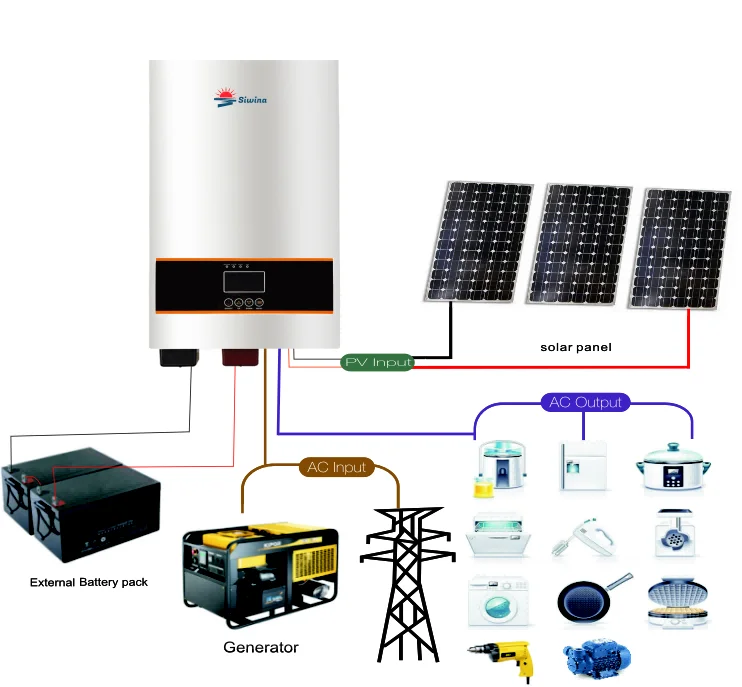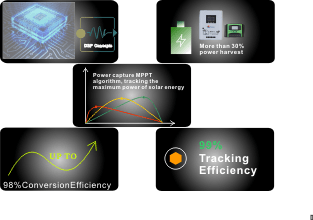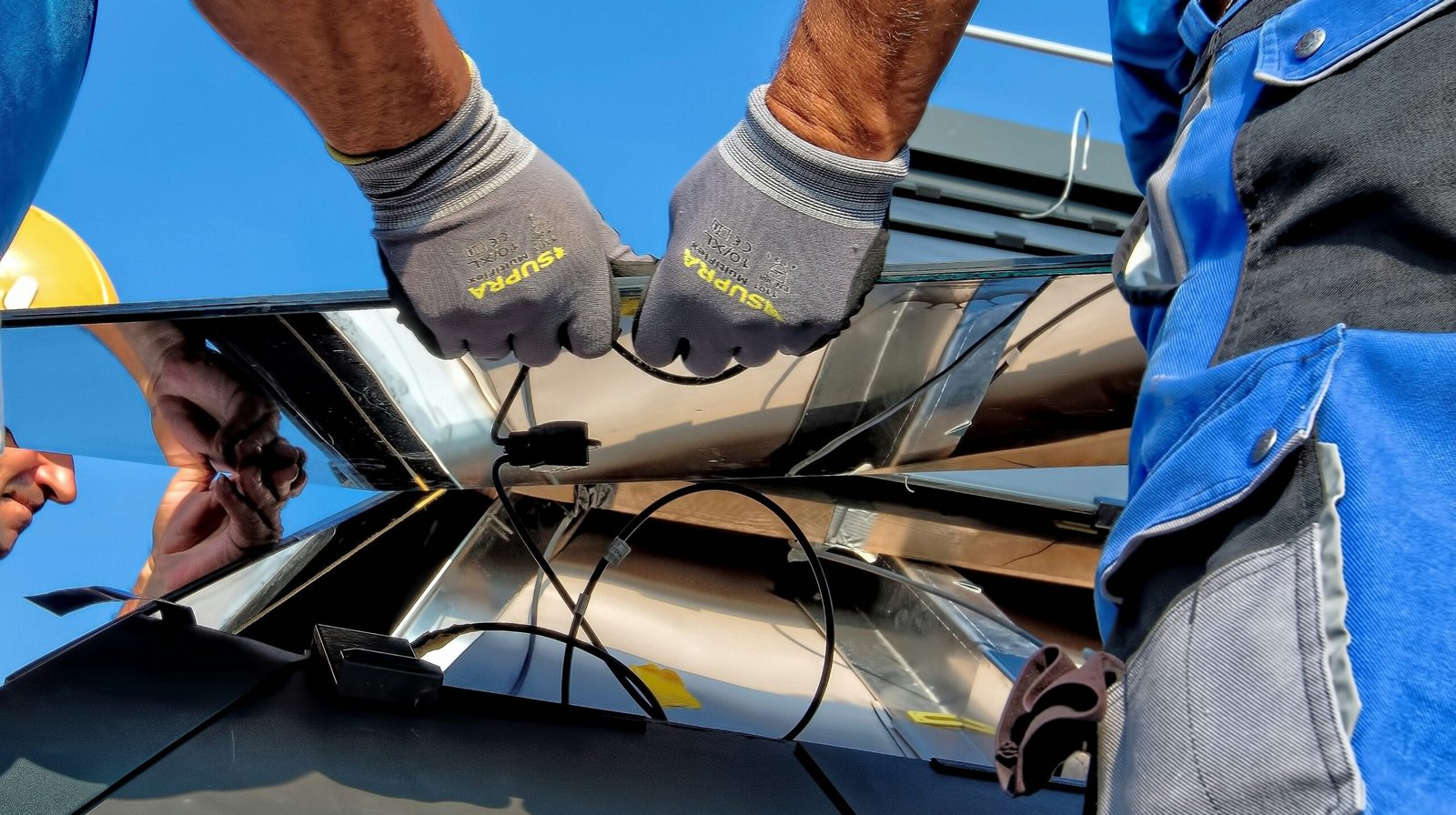Understanding the Basics of Solar Energy Systems
Solar energy systems harness the sun’s power and convert it into usable electricity through a series of interconnected components. The primary elements of these systems include solar panels, inverters, batteries, and charge controllers, each of which plays a crucial role in energy conversion and storage. Understanding how these components work together can aid in the selection of the right inverter power and compatible solar products for an efficient energy solution.
At the heart of every solar energy system are the solar panels, which capture sunlight and convert it into direct current (DC) electricity. This process utilizes photovoltaic cells within the panels, which absorb sunlight and initiate the flow of electrons, resulting in the generation of electricity. However, most household appliances operate on alternating current (AC) electricity, necessitating the use of an inverter. The inverter serves as a critical link in the system, converting the DC electricity produced by the solar panels into AC electricity suitable for household use.
Beyond the generation and conversion of electricity, batteries also play a pivotal role in a solar energy system. They store any excess energy generated during sunny periods, ensuring that power is available during times of low sunlight or at night. When the sunlight is abundant and production exceeds demand, the surplus energy is stored in the batteries for future consumption. This capability enhances the flexibility and reliability of solar energy systems, allowing users to utilize solar power even when generation is low.
Charge controllers are another essential component, regulating the flow of electricity between the solar panels and batteries to prevent overcharging and maintain optimal battery health. By managing the power transferred to and from the batteries, charge controllers ensure that the energy storage process is efficient and safe, contributing to the longevity of the entire solar energy system.
In summary, a solar energy system comprises solar panels to harness sunlight, an inverter for converting DC to AC electricity, batteries for storage, and charge controllers for effective energy management. Understanding these basics is important for anyone looking to invest in solar technology, as it lays the foundation for making informed choices regarding inverter power and compatible solar products.

Why Inverter Power Matters
Inverter power plays a pivotal role in the efficiency and performance of a solar energy system. The inverter acts as the heart of the system, converting direct current (DC) generated by solar panels into alternating current (AC), which is used by most household appliances. Selecting the appropriate inverter power is crucial as it directly impacts energy output. If the inverter is undersized, it can lead to clipping; this means that the inverter will be unable to convert all of the generated energy into usable electricity, resulting in wasted potential and reduced overall energy production. Conversely, an oversized inverter may lead to inefficiencies and increased costs without providing additional benefits.
Moreover, the reliability of the solar energy system is significantly influenced by the selected inverter power. A system with a well-matched inverter will operate more smoothly and efficiently, reducing wear and tear on the system components, which contributes to longevity. Additionally, reliable inverter performance ensures stable energy supply, allowing homeowners to avoid disruptions in their power use. If the inverter is too weak during peak sunlight hours, it can fail to meet the household’s energy demands, leading to outages or dependency on grid power.
Cost-effectiveness is another critical factor related to inverter power selection. A well-chosen inverter is key to maximizing return on investment in solar technology. The initial costs of purchasing and installing a solar system can be significant; therefore, selecting an inverter that matches the energy generation capabilities of the solar panels can yield significant long-term savings by optimizing energy production. Furthermore, many states and federal programs offer incentives that can make investing in a quality inverter more affordable. Thus, selecting the right inverter power is an essential component for ensuring the effectiveness and efficiency of any solar energy system.
Different Types of Inverters: Which One is Right for You?
Choosing the right inverter for your solar energy system is crucial for maximizing efficiency and ensuring reliability. In the market today, there are several types of inverters, each with unique characteristics. The three primary types are string inverters, microinverters, and hybrid inverters.
String inverters are the most commonly used type for residential solar systems. They connect multiple solar panels in series, forming a “string.” One of the key advantages of string inverters is their cost-effectiveness; they are generally less expensive than other inverter types. Additionally, they are simpler to install and require minimal maintenance. However, their performance is heavily influenced by the weakest panel in the string; if one panel is shaded or malfunctioning, it can reduce the output of the entire string. This makes string inverters less ideal for installations with varying orientations or shading issues.
On the other hand, microinverters operate differently by being installed on each individual solar panel. This allows them to optimize performance on a panel-by-panel basis, enhancing overall energy production, especially in scenarios where some panels may be shaded or face different directions. Despite their higher upfront costs, microinverters can offer better energy yields and improved system monitoring. However, installation can be more complex due to the increased number of units, leading to possible higher labor costs.
Lastly, hybrid inverters combine features of both string and microinverters, providing the flexibility to integrate battery storage systems. They allow for energy management from both solar production and stored energy, making them an excellent choice for those looking to maximize self-consumption and energy independence. Hybrid inverters cater well to changing energy needs but may come with a more complex installation process and higher initial investments.
In summary, selecting the appropriate inverter depends on your specific energy needs, installation conditions, and budget. Evaluating the advantages and drawbacks of string, micro, and hybrid inverters will guide you in making an informed decision that optimizes your solar energy system’s performance.
Assessing Your Power Needs: Calculating Required Inverter Size
When setting up a solar energy system, one of the critical questions to address is the size of the inverter required to meet your power needs. An inverter is vital in converting the direct current (DC) electricity generated by solar panels into alternating current (AC) electricity, which is used by most household appliances. Therefore, accurately calculating the required inverter size is essential for optimal system performance and efficiency.
The first step in this process involves assessing your daily energy consumption. Gather data on the wattage of each electrical device you regularly use and estimate the hours each device runs daily. A household might utilize several appliances, including refrigerators, air conditioners, lighting, and electronics. To simplify the calculation, create a list of these devices along with their wattage ratings. For example, a refrigerator may use around 150 watts, while LED lightbulbs might require approximately 10 watts each.
Once you have compiled your appliances and their respective wattages, multiply the wattage by the number of hours they are used each day. This will yield the daily watt-hour consumption per device. Summing these totals will provide the total daily energy requirement for your home in watt-hours. It is also crucial to consider future energy needs; plan for any upcoming additions like electric vehicles or additional appliances.
After determining the total daily watt-hours, the next step is to select an appropriate inverter size. Keep in mind that inverters should not exceed a specified percentage of their maximum capacity to avoid operational inefficiency. A standard recommendation is to size your inverter to accommodate around 20-25% more than the anticipated total consumption. This buffer allows for energy spikes and ensures that the inverter can handle the load efficiently, especially during peak usage times.
Compatibility: Matching Inverters with Solar Panels
When designing a solar energy system, one of the most critical steps is ensuring that the inverter is compatible with the selected solar panels. The inverter serves as the bridge between the solar panels and the electrical grid or battery storage; thus, its compatibility significantly affects the system’s overall efficiency and performance. Several key factors need to be taken into consideration to achieve this compatibility.
The first factor to consider is voltage ratings. Solar panels typically have specific voltage outputs, and it is essential to select an inverter that can handle these outputs. Mismatches in voltage can lead to inefficiencies or even damage to the system. Generally, inverters will have a maximum input voltage that should not be exceeded, so understanding the voltage characteristics of both your panels and inverter is vital for safe operation.
Another crucial aspect of compatibility is the Maximum Power Point Tracking (MPPT) feature offered by many modern inverters. MPPT technology enables the inverter to optimize power output by adjusting its electrical load and searching for the optimal voltage and current levels from the solar panels. By ensuring that the inverter supports the MPPT method suitable for the specific solar panels in use, one can greatly enhance the solar energy harvest and overall system efficiency.
Furthermore, it is essential to check the specifications of both the inverter and solar panels extensively before making a purchase. Different models and brands may come with varying inherent characteristics such as output capacity, efficiency ratings, and safety features. Ensuring that the chosen inverter complements the operational requirements of the solar panels will promote optimal performance and longevity of the solar energy system.
Inverter Brands and Product Reviews
When selecting an inverter for your solar energy system, choosing a reputable brand is critical for ensuring reliability and efficiency. Some of the most prominent inverter brands in the market include SMA, Fronius, SolarEdge, and Siwina Inverter https://swninverter.com/product-category/solar-inverter/. Each of these manufacturers offers various models that cater to different needs and preferences, making it essential to understand their product lines and key features.
When evaluating these brands, it is crucial to consider factors such as efficiency ratings, installed system size, customer reviews, and after-sales support. Conducting thorough product comparisons will aid in determining which inverter aligns best with your solar energy system and long-term energy goals.
Understanding Additional Solar Components: Batteries and Charge Controllers
In a solar energy system, inverters are crucial for converting direct current (DC) from solar panels into alternating current (AC) for household use. However, other components, notably batteries and charge controllers, play integral roles in energy storage and management, enhancing the system’s efficiency. Understanding these components is essential when designing a solar setup.
Batteries store excess energy generated during peak sunlight hours, ensuring a consistent power supply, especially during periods of low sunlight or at night. There are various battery technologies available, such as lead-acid, lithium-ion, and gel batteries, each offering unique advantages. Lead-acid batteries are typically more affordable but have a shorter life cycle and depth of discharge compared to lithium-ion options, which are more efficient and compact but come at a higher initial cost. Understanding the specific energy needs of your household can guide you in selecting the right battery technology for your solar energy system.
Charge controllers are another vital component of a solar setup, serving to regulate the flow of electricity between the solar panels, batteries, and inverter. Their primary function is to prevent overcharging and discharging, thus extending the lifespan of the batteries. There are two main types of charge controllers: pulse width modulation (PWM) and maximum power point tracking (MPPT). PWM controllers are often less expensive and suitable for smaller systems, while MPPT controllers are more efficient and perform better under varying sunlight conditions, making them ideal for larger systems. Choosing the appropriate charge controller ensures optimal performance and reliability of the entire solar energy system.

Incorporating compatible batteries and charge controllers with your chosen inverter not only boosts overall efficiency but also enhances the system’s longevity and sustainability. Therefore, careful consideration of these components is as crucial as selecting the right inverter when planning your solar energy system.
Installation and Sizing Considerations
Choosing the right inverter and ensuring appropriate sizing are critical components of a successful solar energy system installation. The inverter serves as the heart of the solar setup, converting direct current (DC) generated by the solar panels into alternating current (AC) that can be used in homes or fed back into the grid. An improperly sized inverter can lead to efficiency losses, which may offset the benefits of installing the solar system in the first place.
When determining the inverter size, it is essential to consider the total wattage output of the solar panels. A general rule of thumb is to size the inverter slightly larger than the peak output of the solar array to accommodate potential losses due to inefficiency and variances in solar radiation. However, oversized inverters may lead to reduced efficiency during low output conditions. Therefore, meticulous calculations and adjustments based on local solar conditions and expected energy usage are vital.
In addition to sizing, proper placement of the inverter significantly influences performance and longevity. Inverters should be installed in shaded, cool areas to minimize overheating, which can affect operational efficiency. Furthermore, accessibility is crucial for maintenance purposes; ensuring that the inverter is easily reachable can save time and reduce potential costs in the long run.
Installation challenges can also arise, such as variances in roofing structure, electrical requirements, and local regulations. Engaging a qualified solar installer can mitigate these challenges by providing expertise in navigating codes and best practices. Additionally, understanding the financial implications, including initial installation costs versus long-term savings on electricity bills, plays a key role in making informed decisions regarding the solar energy system design.
Revising Your Choices: Upgrading and Future Proofing Your System
As technologies advance and energy needs change, it is essential to consider potential upgrades to your solar energy system. Future-proofing your installation not only enhances its current performance but also accommodates growing energy demands. When planning for upgrades, the first aspect to evaluate is your energy consumption trends. Analyzing recent utility bills or using an energy monitoring system can provide insights into your energy usage patterns, helping you determine whether an increase in power capacity is necessary.
When considering enhancements, upgrading your inverter should be a priority. Modern inverters offer various functions, like improved efficiency ratings, higher power outputs, and integrated smart technologies. If you plan to add more solar panels to your system, make sure that your new inverter can handle the additional capacity. This compatibility is crucial for maintaining system efficiency and reliability. Additionally, check the specifications of the inverter’s maximum input voltage and current; these must align with the capabilities of the new panels to ensure optimal performance.
Expansion of your solar array also involves careful selection of new solar panels. Opt for panels with similar characteristics to your existing setup to ensure uniformity in production. This will help maintain balance in energy generation, avoiding complications such as mismatched outputs and potential system inefficiencies. Furthermore, consider the durability and warranty of new products, which can provide peace of mind and reduce total lifecycle costs.
Lastly, think ahead about your solar system’s scalability. Choosing equipment that is compatible with energy storage solutions and smart home technologies can enhance adaptability. This versatility not only prepares your system for future upgrades but also maximizes the return on investment of your solar energy system.

